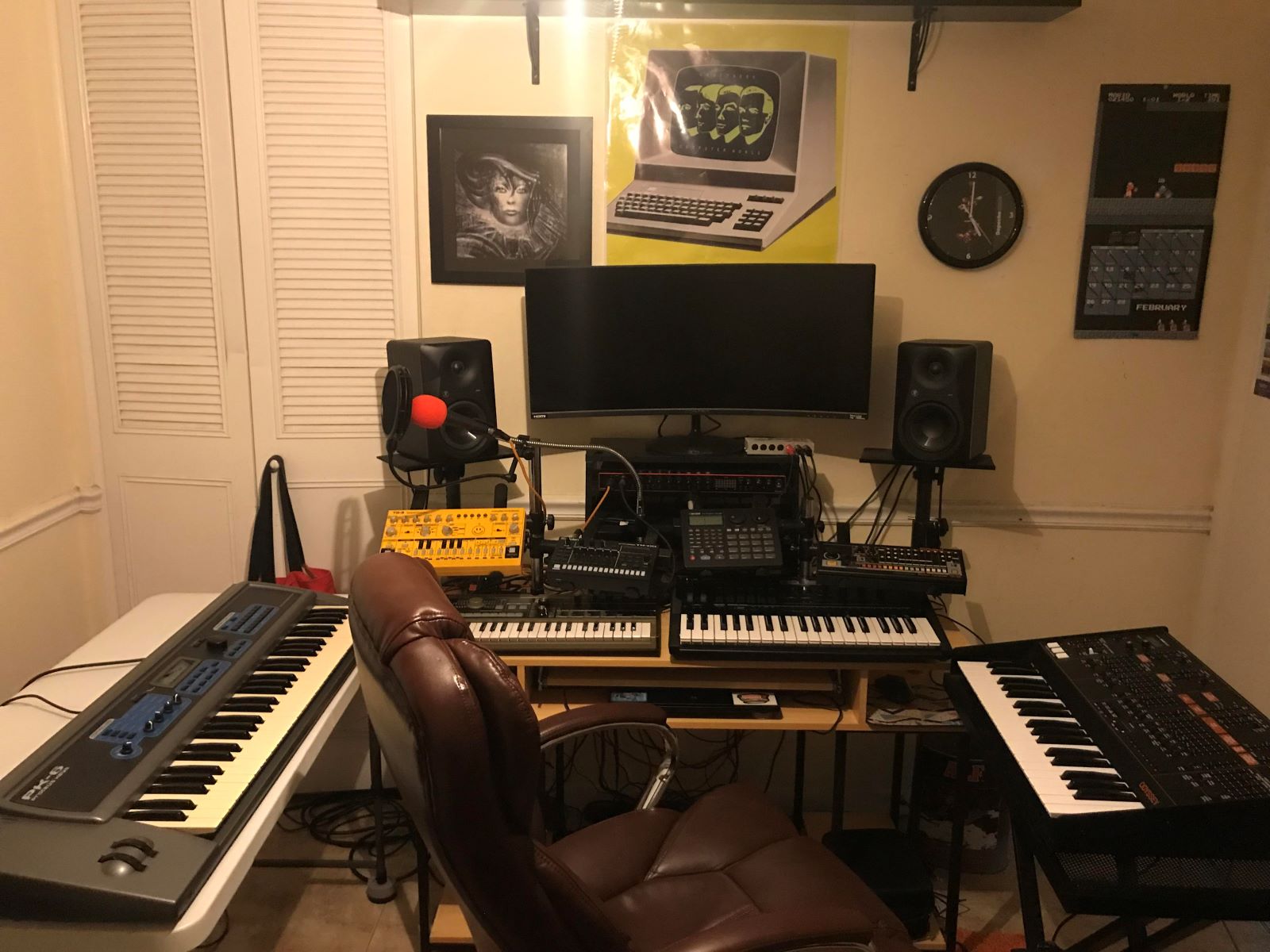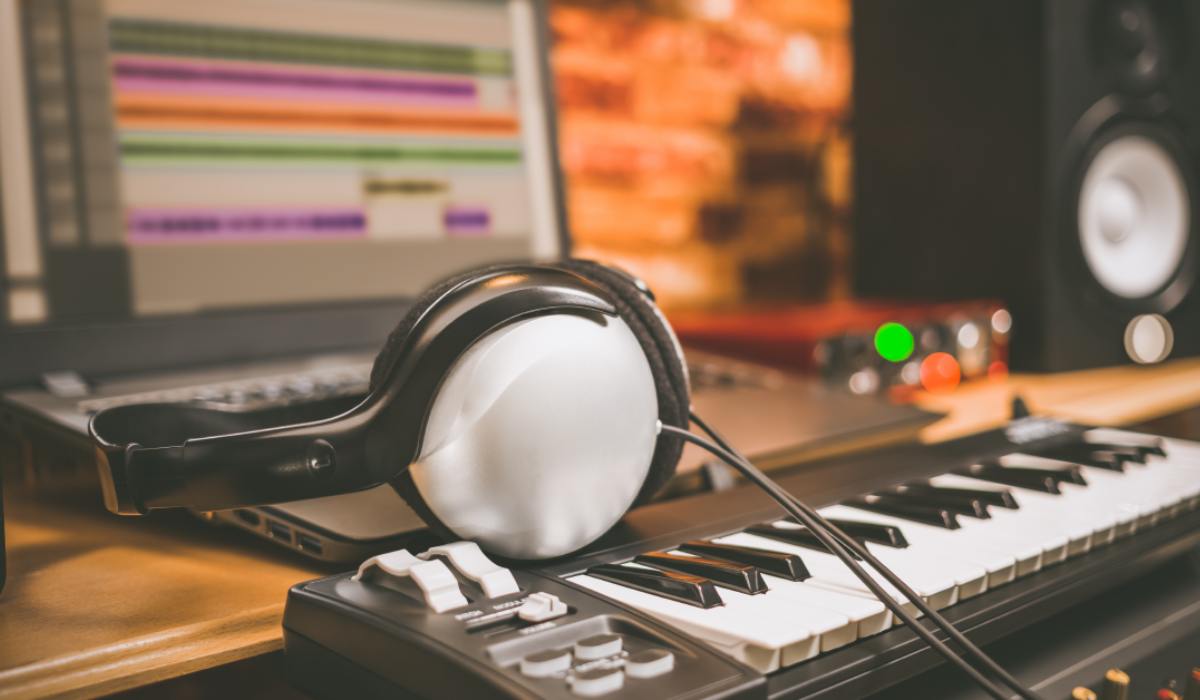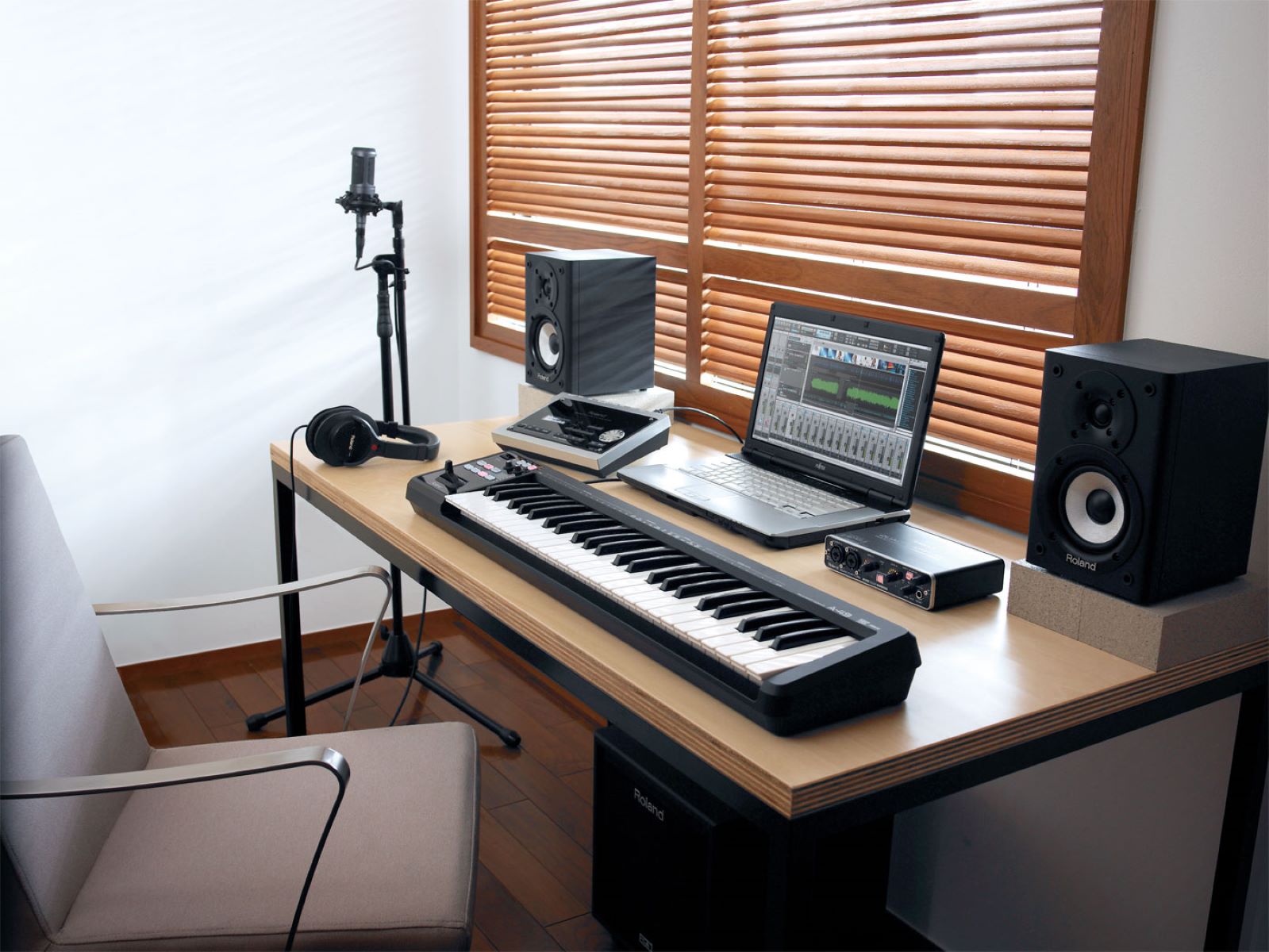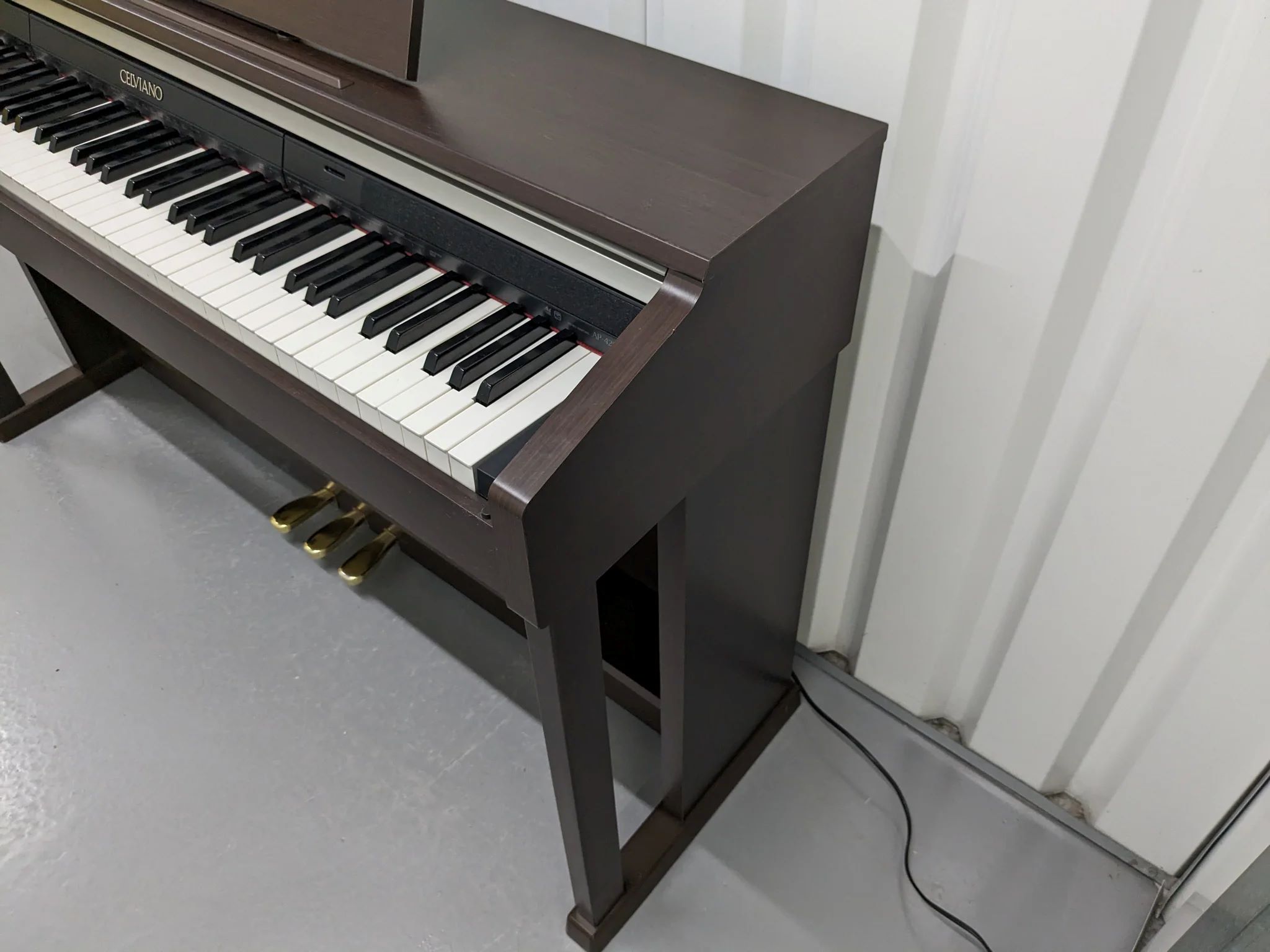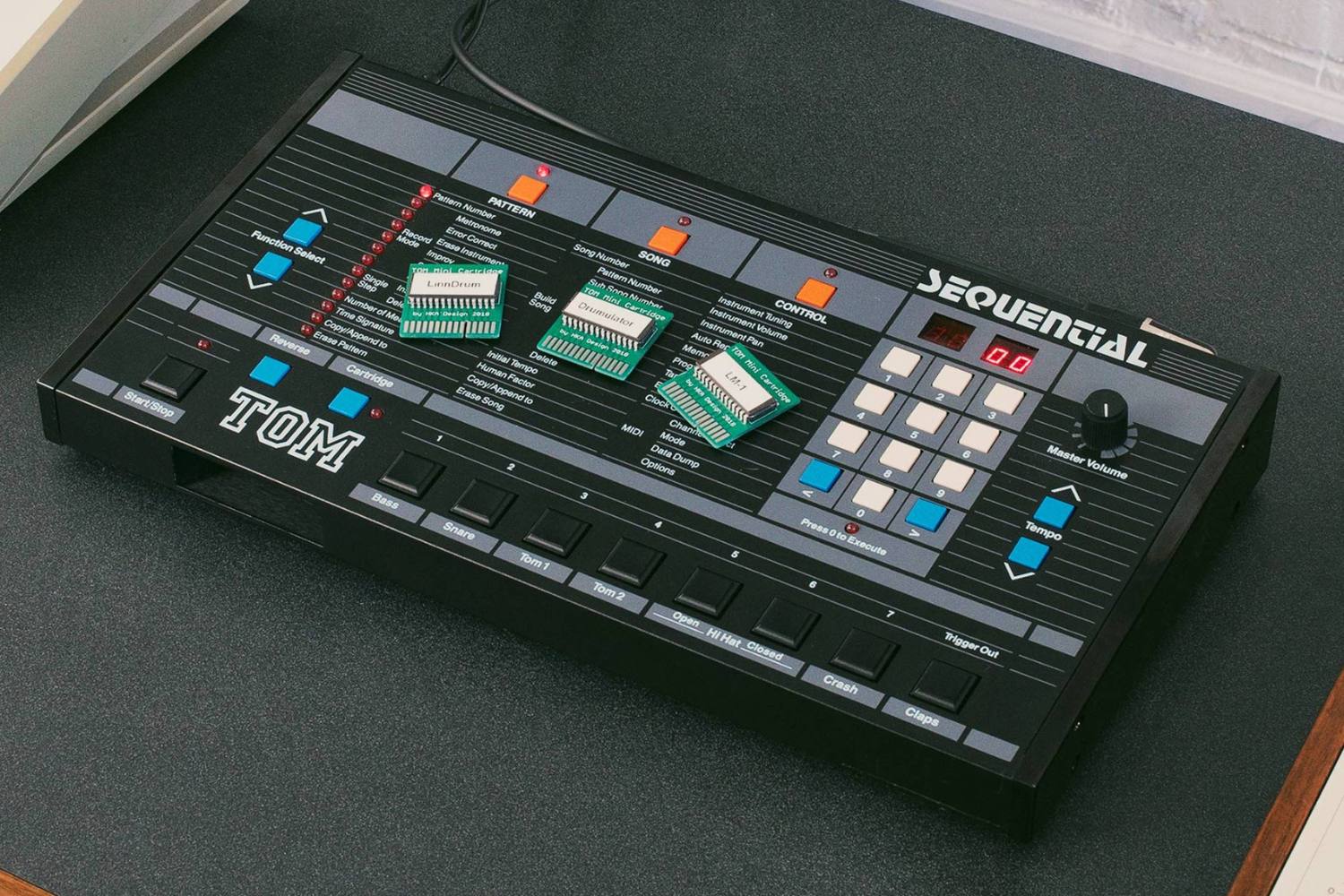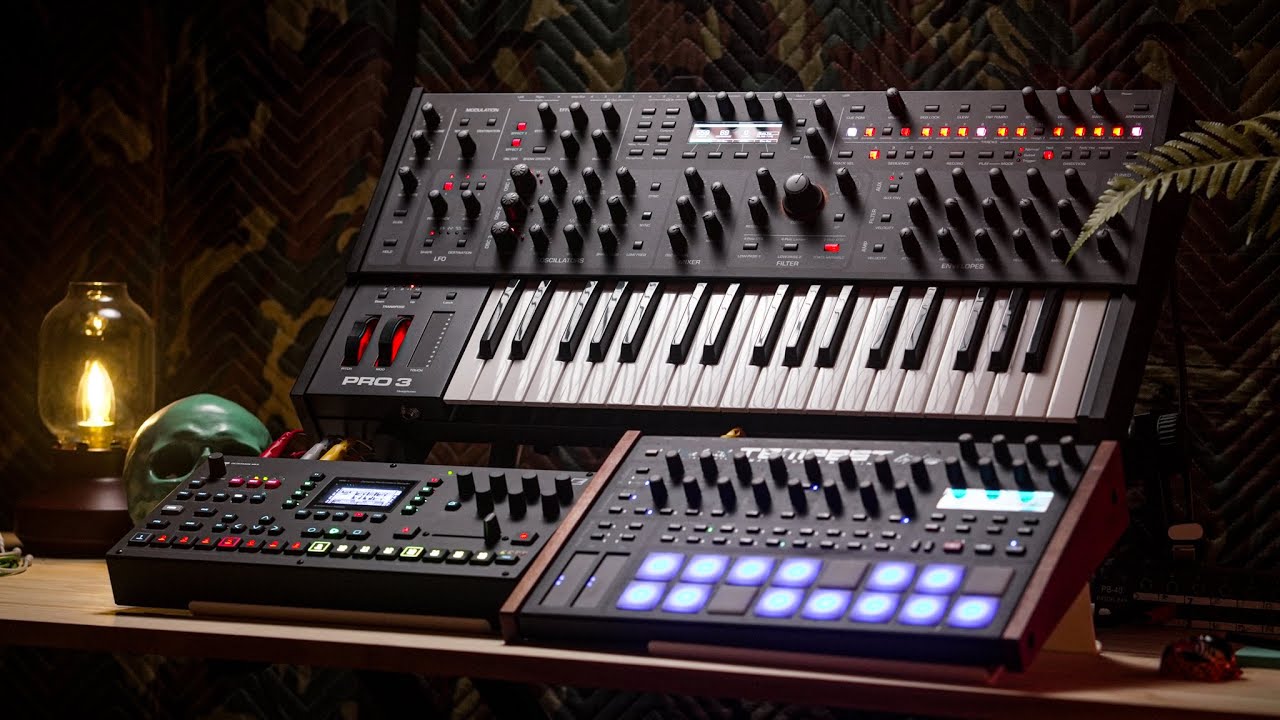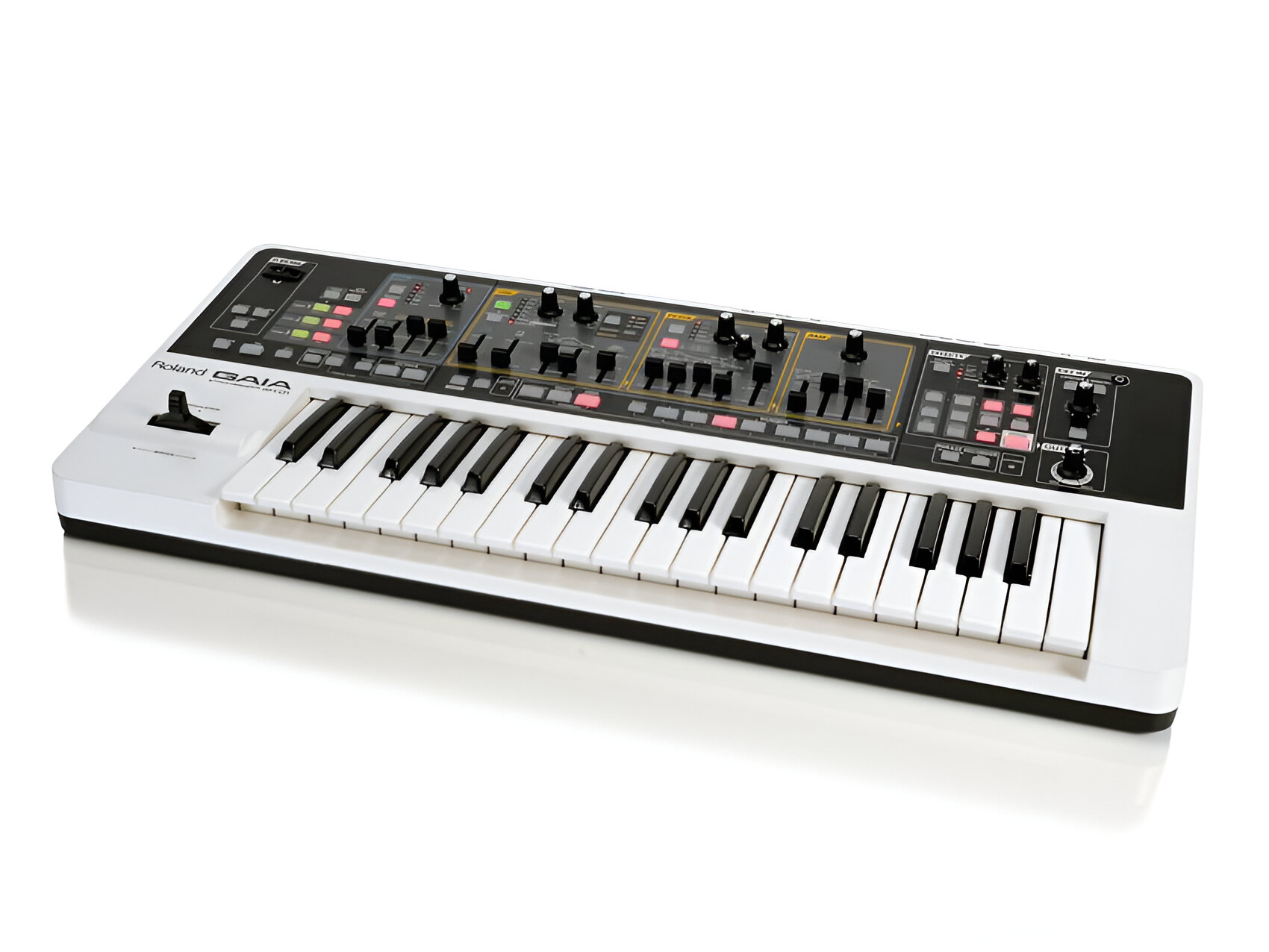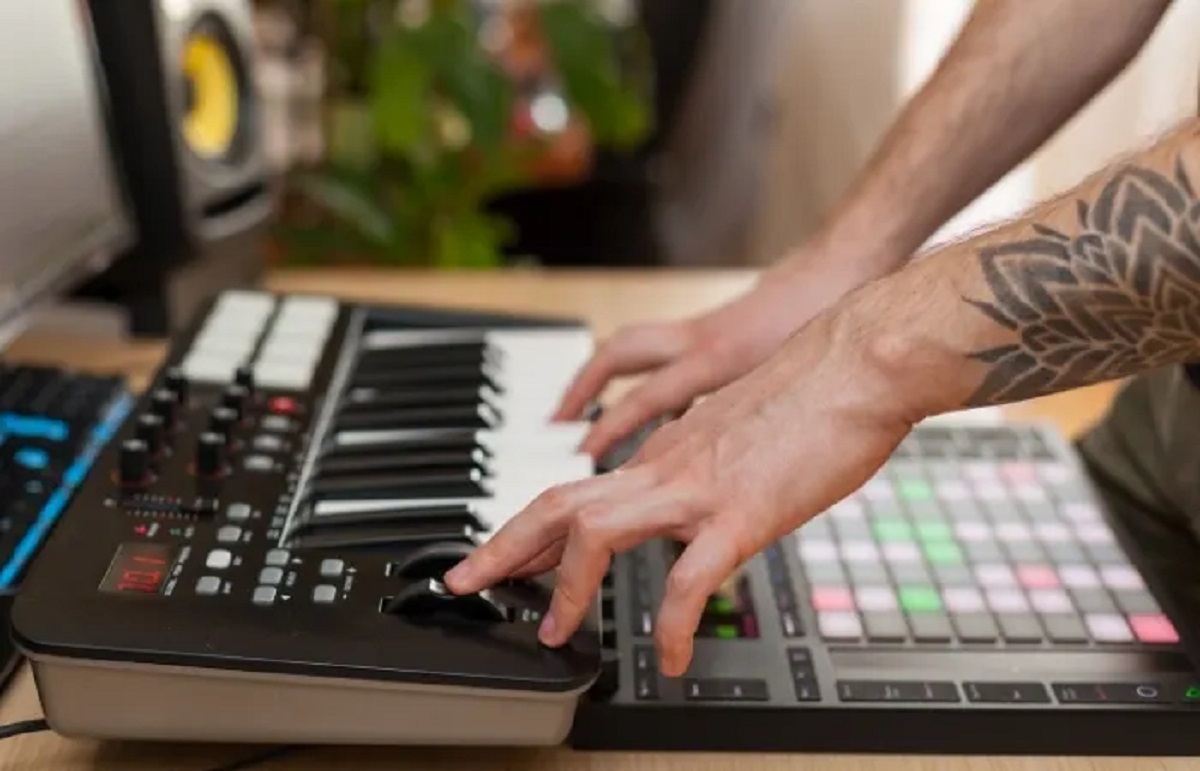Introduction
Are you ready to elevate your music production game by integrating your digital piano, synthesizer, and drum machine through MIDI? This comprehensive guide will walk you through the process, enabling you to seamlessly connect these instruments and harness the power of MIDI technology. By following these steps, you'll be able to unlock a world of creative possibilities, from layering rich piano melodies with synthesized textures to adding dynamic drum patterns to your compositions.
Whether you're a seasoned musician or just starting your journey in music production, understanding MIDI and how to connect your instruments is essential for unleashing the full potential of your setup. With MIDI, you can effortlessly control and synchronize multiple devices, allowing for seamless communication between your digital piano, synthesizer, and drum machine. This opens the door to endless sonic experimentation and live performance possibilities.
In the following sections, we'll delve into the intricacies of MIDI and guide you through the process of connecting each instrument. We'll explore the nuances of setting up MIDI channels and provide practical tips for testing your setup. By the end of this guide, you'll have the knowledge and confidence to integrate your digital piano, synthesizer, and drum machine with MIDI, empowering you to create immersive and captivating musical experiences.
Let's embark on this journey to unlock the full potential of your musical arsenal through the power of MIDI connectivity. Get ready to breathe new life into your compositions and performances as we dive into the world of interconnected musical expression.
Understanding MIDI
Before diving into the process of connecting your digital piano, synthesizer, and drum machine, it’s crucial to grasp the fundamentals of MIDI (Musical Instrument Digital Interface). MIDI serves as the universal language that enables electronic musical instruments, computers, and other devices to communicate and synchronize with each other. Unlike audio signals, MIDI transmits data such as note information, velocity, pitch, modulation, and more, allowing for precise control and manipulation of musical elements.
At its core, MIDI consists of a series of digital messages that convey musical instructions. These messages can include note-on and note-off commands, control changes, pitch bend information, and synchronization signals. By leveraging MIDI, musicians and producers can seamlessly integrate various components of their setup, paving the way for intricate musical arrangements and live performances.
One of the key advantages of MIDI is its versatility. It empowers musicians to trigger sounds from multiple instruments simultaneously, create intricate layers of music, and control parameters such as volume, panning, and effects in real time. Additionally, MIDI facilitates the seamless integration of hardware and software instruments, opening up a vast array of sonic possibilities.
When connecting your digital piano, synthesizer, and drum machine via MIDI, you’re essentially establishing a network that allows these instruments to communicate and synchronize their actions. This interconnected setup lays the foundation for cohesive and expressive musical performances, whether in the studio or on stage.
As we proceed with the guide, keep in mind that MIDI forms the backbone of the connectivity between your instruments, serving as the conduit through which musical ideas flow and interact. With a solid understanding of MIDI, you’ll be well-equipped to harness the full potential of your musical arsenal and explore the boundless creative avenues that MIDI connectivity unlocks.
Connecting the Digital Piano
When integrating your digital piano into a MIDI setup, the first step is to establish the physical connection between the instrument and the MIDI interface or other MIDI-enabled devices. Most modern digital pianos come equipped with MIDI ports, typically labeled as MIDI IN and MIDI OUT. These ports facilitate the transmission of MIDI data to and from the piano, allowing it to communicate with other MIDI-compatible devices.
To connect your digital piano to the MIDI interface, start by locating the MIDI ports on the rear panel of the instrument. Once identified, use standard MIDI cables to establish a connection between the MIDI OUT port on the digital piano and the MIDI IN port on the MIDI interface. This configuration enables the digital piano to transmit MIDI data to the interface, initiating seamless communication between the two devices.
Next, ensure that the MIDI interface is connected to your computer or MIDI-enabled hardware, as this forms the bridge through which MIDI data can be routed and processed. By establishing this connection, you’re effectively integrating your digital piano into the MIDI network, setting the stage for collaborative interactions with other MIDI-equipped instruments and software.
It’s important to verify that the MIDI channels on your digital piano are configured to align with the channels used by the receiving devices, such as synthesizers or software instruments. This ensures that the transmitted MIDI data is accurately interpreted and triggers the intended musical responses on the receiving end.
Once the physical and channel configurations are in place, your digital piano is seamlessly integrated into the MIDI setup, ready to exchange musical information with other interconnected instruments. This connectivity empowers you to explore a myriad of creative possibilities, from layering piano melodies with synthesized textures to triggering rhythmic patterns on a connected drum machine.
With the digital piano successfully connected via MIDI, you’ve laid the groundwork for a cohesive and expressive musical environment, where each instrument collaborates harmoniously to bring your musical visions to life.
Connecting the Synthesizer
Integrating your synthesizer into a MIDI setup involves establishing a seamless connection that enables it to communicate with other MIDI-enabled devices, such as your digital piano and drum machine. To begin, locate the MIDI ports on your synthesizer, typically labeled as MIDI IN, MIDI OUT, and MIDI THRU. These ports facilitate the transmission and reception of MIDI data, forming the backbone of the synthesizer’s connectivity within the MIDI network.
Using standard MIDI cables, connect the MIDI OUT port on the synthesizer to the MIDI IN port on your MIDI interface or other MIDI-equipped devices. This physical connection allows the synthesizer to transmit MIDI data to the receiving devices, enabling synchronized control and communication within the MIDI network.
Once the physical connections are established, it’s essential to configure the MIDI channels on the synthesizer to align with those of the connected devices. This ensures that the transmitted MIDI data is accurately interpreted and triggers the intended musical responses on the receiving end. By harmonizing the MIDI channels across interconnected instruments, you create a cohesive environment where musical instructions flow seamlessly between devices.
After connecting the synthesizer to the MIDI network, you can leverage its expansive sound palette to enhance your musical compositions and performances. Whether you’re layering rich textures alongside your digital piano or creating intricate arpeggiated patterns to complement the rhythmic elements from a connected drum machine, the synthesizer becomes an integral part of your interconnected musical ecosystem.
Furthermore, by integrating the synthesizer into the MIDI setup, you gain the ability to control and manipulate its parameters in real time, opening up a world of sonic experimentation and expressive possibilities. From modulating filter cutoff frequencies to adjusting envelope settings, MIDI connectivity empowers you to shape and sculpt the synthesizer’s sound with precision and finesse.
With the synthesizer seamlessly integrated into the MIDI network, you’ve expanded the sonic horizons of your musical setup, paving the way for dynamic collaborations and immersive sonic explorations. This interconnected environment sets the stage for boundless creativity, where the synthesizer harmonizes with other MIDI-enabled instruments to bring your musical visions to fruition.
Connecting the Drum Machine
Integrating a drum machine into your MIDI setup adds rhythmic depth and versatility to your musical arsenal, allowing for synchronized control and interaction with other MIDI-enabled instruments. To begin, locate the MIDI ports on your drum machine, typically labeled as MIDI IN, MIDI OUT, and MIDI THRU. These ports serve as the gateway for transmitting and receiving MIDI data, enabling seamless communication within the MIDI network.
Using standard MIDI cables, connect the MIDI OUT port on the drum machine to the MIDI IN port on your MIDI interface or other MIDI-compatible devices. This physical connection establishes a pathway for the drum machine to transmit MIDI data to the receiving devices, fostering collaborative musical interactions within the MIDI network.
Once the physical connections are in place, it’s essential to configure the MIDI channels on the drum machine to align with those of the interconnected instruments. By harmonizing the MIDI channels across your setup, you ensure that the transmitted MIDI data triggers the intended musical responses on the receiving devices, facilitating cohesive and synchronized musical performances.
With the drum machine seamlessly integrated into the MIDI network, you gain the ability to trigger and manipulate rhythmic patterns, drum sounds, and percussion elements in real time. Whether you’re synchronizing the drum machine with your digital piano and synthesizer to create intricate rhythmic layers or experimenting with dynamic tempo changes, MIDI connectivity empowers you to infuse your compositions with expressive and dynamic rhythmic textures.
Furthermore, the drum machine’s integration into the MIDI setup enables precise control over parameters such as tempo, pattern changes, and drum sound modulation, adding a layer of dynamic versatility to your musical performances and productions. By leveraging MIDI, you can seamlessly synchronize the drum machine with other instruments, unlocking a world of rhythmic possibilities and creative expression.
By integrating the drum machine into the MIDI network, you’ve expanded the rhythmic capabilities of your musical setup, paving the way for dynamic collaborations and immersive sonic explorations. This interconnected environment sets the stage for boundless creativity, where the drum machine harmonizes with other MIDI-enabled instruments to elevate your musical compositions and performances.
Setting up MIDI Channels
Configuring MIDI channels is a pivotal step in establishing seamless communication and control between your interconnected instruments within the MIDI network. MIDI channels serve as virtual pathways through which MIDI data travels, allowing for the independent transmission of musical information to different devices. By assigning specific MIDI channels to each instrument, you can orchestrate collaborative performances, layered compositions, and synchronized control within your setup.
Begin by accessing the MIDI channel settings on each of your MIDI-enabled instruments, including the digital piano, synthesizer, and drum machine. These settings may be accessible through the instrument’s interface or via dedicated MIDI channel configuration menus, depending on the device’s design and capabilities.
Assigning unique MIDI channels to each instrument is essential to prevent conflicting MIDI data and ensure that each device responds accurately to the transmitted information. For example, you may designate MIDI channel 1 for the digital piano, MIDI channel 2 for the synthesizer, and MIDI channel 10 for the drum machine, although the specific assignments can vary based on your preferences and the capabilities of your instruments.
Once the MIDI channels are configured, you create a framework for individualized communication and control, allowing you to trigger specific instruments, manipulate parameters, and synchronize musical elements with precision. This setup empowers you to orchestrate complex musical arrangements, craft dynamic performances, and explore the full potential of your interconnected instruments.
Furthermore, establishing consistent MIDI channel assignments across your instruments fosters a cohesive environment where musical instructions flow seamlessly, enabling harmonious interactions and synchronized responses. Whether you’re layering melodies from the digital piano with textured synthesizer sounds or integrating rhythmic patterns from the drum machine, the configured MIDI channels facilitate collaborative musical expressions.
By setting up MIDI channels effectively, you lay the groundwork for a cohesive and expressive musical environment, where each instrument collaborates harmoniously to bring your musical visions to life. This meticulous configuration empowers you to harness the full potential of MIDI connectivity, unlocking a world of creative possibilities and immersive musical experiences within your interconnected setup.
Testing the Setup
After connecting your digital piano, synthesizer, and drum machine within the MIDI network and configuring the MIDI channels, it’s crucial to conduct thorough testing to ensure that the setup functions seamlessly and that each instrument communicates effectively with the others. Testing the MIDI setup allows you to verify the transmission of MIDI data, assess the synchronization of musical elements, and identify any potential issues that may need to be addressed.
Begin by triggering musical notes, chords, or rhythmic patterns on the digital piano and observing how the synthesizer and drum machine respond. Verify that the MIDI data is accurately transmitted to the respective instruments, triggering the intended musical responses without latency or discrepancies. This initial test provides insight into the effectiveness of the MIDI communication between the interconnected devices.
Next, experiment with layering sounds from the synthesizer alongside the digital piano, leveraging the MIDI connectivity to create harmonious and expressive musical textures. Assess the synchronization of the instruments, ensuring that they respond cohesively to the transmitted MIDI data and that the configured MIDI channels facilitate seamless interactions.
Similarly, explore the integration of rhythmic patterns and percussion sounds from the drum machine within your musical compositions. Test the synchronization of the drum machine with the digital piano and synthesizer, evaluating how the MIDI connectivity enables dynamic rhythmic collaborations and expressive control over percussion elements.
During the testing phase, it’s essential to experiment with real-time parameter adjustments, such as volume, panning, modulation, and effects, to gauge the responsiveness and precision of MIDI control across your interconnected instruments. By manipulating these parameters, you can assess the versatility and expressive potential of the MIDI setup, ensuring that you can shape and sculpt the sonic landscape with finesse.
Furthermore, consider testing the MIDI setup in a performance context, whether in a studio recording environment or a live setting. Evaluate how the interconnected instruments interact during live performances, assessing the reliability and consistency of MIDI communication under real-world conditions.
By conducting comprehensive testing of the MIDI setup, you can fine-tune the configuration, troubleshoot any potential issues, and optimize the interconnected environment for seamless musical interactions. This iterative testing process empowers you to harness the full potential of your MIDI-enabled instruments, ensuring that they collaborate harmoniously to bring your musical visions to fruition.
Conclusion
Embarking on the journey to connect your digital piano, synthesizer, and drum machine through MIDI has unveiled a world of interconnected musical possibilities. By understanding the intricacies of MIDI and meticulously configuring the connectivity between your instruments, you’ve laid the foundation for seamless communication, synchronized performances, and boundless creative expression.
Through the process of connecting each instrument and setting up MIDI channels, you’ve established a cohesive musical environment where the digital piano, synthesizer, and drum machine collaborate harmoniously. This interconnected setup empowers you to layer rich textures, trigger dynamic rhythmic patterns, and sculpt expressive sonic landscapes with precision and finesse.
As you tested the MIDI setup, you verified the effectiveness of the interconnected environment, ensuring that the transmission of MIDI data, synchronization of musical elements, and real-time parameter control function seamlessly across your instruments. This rigorous testing process has honed the reliability and versatility of your MIDI setup, setting the stage for immersive musical experiences and dynamic performances.
With each instrument seamlessly integrated into the MIDI network, you’ve unlocked a world of creative possibilities, from crafting intricate compositions to delivering captivating live performances. The interconnected nature of your setup fosters collaborative musical expressions, allowing you to orchestrate complex arrangements, explore sonic textures, and infuse your compositions with expressive depth.
As you continue to harness the power of MIDI connectivity, remember that the journey doesn’t end with the establishment of the interconnected environment. Embrace the ongoing exploration of MIDI’s potential, experiment with new musical interactions, and push the boundaries of your creative expression within this dynamic ecosystem.
By delving into the realm of MIDI connectivity, you’ve embarked on a transformative musical odyssey, where the digital piano, synthesizer, and drum machine converge to amplify your artistic vision. This interconnected landscape serves as a canvas for boundless creativity, inviting you to sculpt evocative soundscapes, orchestrate captivating performances, and immerse yourself in the art of musical expression.
As you venture forward, let the interconnected nature of your MIDI setup inspire you to explore new sonic frontiers, collaborate with your instruments in innovative ways, and embark on a continual quest for musical innovation within this interconnected realm of expressive possibilities.







